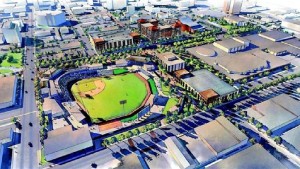Roger Cox is a man of strong feelings … and he possesses the ability to express them with great effectiveness.
The Amarillo lawyer has done so with an essay published in the Amarillo Globe-News. His topic: the multipurpose event venue and the ballot measure set for voters’ decision on Nov. 3.
Cox’s essay is on point at many levels, but the one point that resonates most clearly with me is the funding mechanism that will operate the MPEV once it’s built.
The structure would cost $32 million to build. It’s intended to include a ballpark and would be used for a variety of activities designed to attract people to the downtown district.
Cox writes: “As a landlocked city, we are what we build. People come to Amarillo not for the mountains, lakes or coastline but because of the public facilities, entertainment and other features that we and our predecessors have built.”
He notes as well that city government relies heavily on sales tax revenue to fund the services it provides residents — and visitors. The MPEV, he reckons, will generate more sales tax revenue through the goods and services purchased by visitors who come to Amarillo.
He writes: “So anything that generates sales tax, especially paid by visitors from other communities, is OK by me. Most local retailers will tell you that anywhere from 30 percent to 50 percent of their business comes from out of town — ditto for sales tax. It doesn’t matter whether that money comes from Dallas or Dumas, it spends the same.”
Allow me, then, to add that those who come here from distances too far to travel in just a single day would generate additional revenue from the hotel occupancy tax that would then would be used to maintain the MPEV.
Planners have pledged until they’ve run out of breath that the MPEV, the downtown convention hotel (where officials are about to break ground) and the proposed parking garage will not result in an increase in property taxes.
There’s been a bit of trickery involved with the ballot language. The vote will decide whether to build an MPEV that includes a ballpark. If voters say “yes,” then the city moves forward; if they say “no,” then the project stops.
As Cox notes: “There is no Plan B. A negative vote sends our city back to the drawing board.”
More from Cox: “Will a baseball stadium in downtown Amarillo be a panacea? Of course not. But it is a major piece of a larger puzzle.”
I join my friend Roger Cox in endorsing this proposal.
